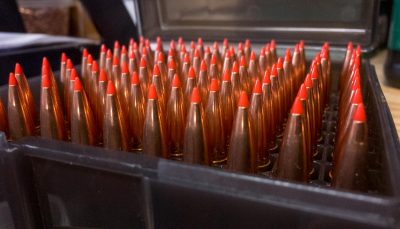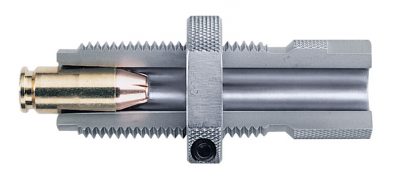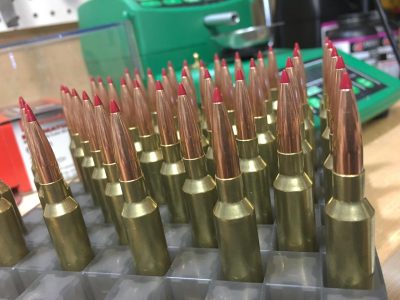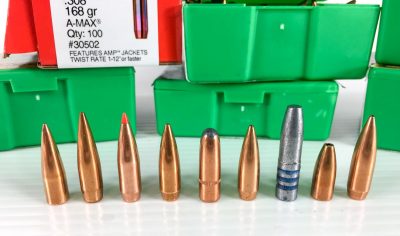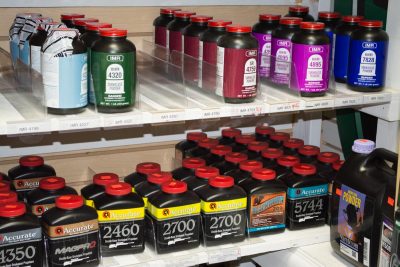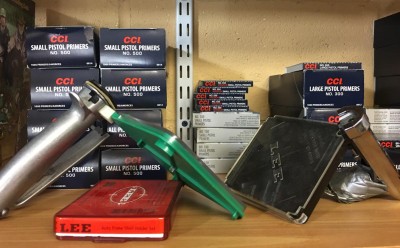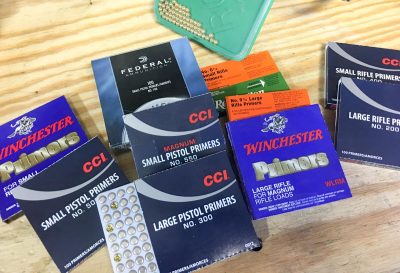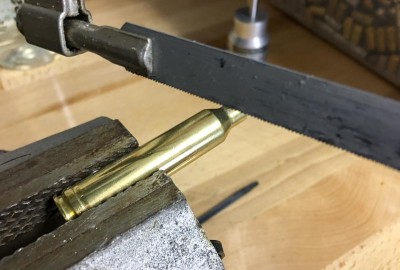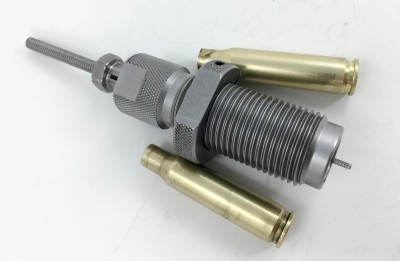RCBS has come to market this year with several updates. First off, they’re offering 30-pound pound Rotary tumbler with ergonomically friendly embedded handles. Let’s face it, dropping 30 pounds of brass and media isn’t something you want on a bare toe and these handles are a welcome and improved design. The RCBS lead furnace is also upgraded to a 25-pound capacity with a digital temperature control. Building from the same technology, they’re also offer25-pound pound lead pot is now available with a digital control.
Reloading Guide
Show First
Reloading with RCBS: Keep It Green: Shoot It Clean — SHOT Show 2018
BY Clay Martin Updated: January 30, 2018Reloading: Final Inspection and Packaging Tips
BY Tom McHale Updated: June 2, 2017The very last step in the reloading process is inspection and packaging. After all is done, I like to combine the inspection and packaging steps. As I put each completed cartridge into a box, I look it over to make sure everything is in order.
Reloading: To Crimp or Not to Crimp, That is the Question
BY Tom McHale Updated: May 22, 2017Crimping gets a bad rap. Just as we sometimes tend to fix construction mistakes with a hammer rather than taking the time to properly fit parts, we tend to view crimping as a way to “fix” a less than perfect bullet seating. The problem with crimping is that it sounds so logical. The word “crimping” kind of implies the process of locking a bullet in place. But, there is more to it than just that.
Reloading: Seating and Crimping Bullets
BY Tom McHale Updated: March 31, 2017So, let’s discuss the topic of seating and crimping in the reloading process. Stated simply, the seating step simply means jamming a new bullet into a cleaned, resized, primed, and powder-charged cartridge case. Crimping “generally” refers to the act of bringing the neck of the cartridge case back to proper dimension after that bullet is stuffed in. There’s a lot more to both actions, especially if you want to be safe, so let’s take a closer look at both steps.
Reloading: Bullet Materials and Shapes
BY Tom McHale Updated: February 3, 2017Bullets are bullets, right? Well, not really. There are a wide array of variables in bullet shape, weight, materials, and construction. Each of these variables can have a dramatic impact on the performance, and safety, of any given load. In other words, loading recipe data for one 147-grain, .308 bullet may be incorrect, and even unsafe, for another projectile of equal caliber and weight. Let’s take a closer look at some of the variables and what you need to know about each.
Reloading: Powder, Propellants, and Pressure
BY Tom McHale Updated: June 24, 2016When it comes to reloading, the powder is the biggest variable. Not only do you need to worry about the exact amount of powder in a charge, you also need to consider the type of powder. By my rough count, and this is not at all official, there are somewhere around 150 types of powder on the market.
Reloading: Priming For Success
BY Tom McHale Updated: June 9, 2016SERIES Part 1: Want to Reload Your Own Ammo? Basic Questions to Consider Part 2: The Reloading Process Part 3: The Gear You’ll Need and What It’ll Cost You Part 4: Brass Cleaning and Preparation to Load Part 5: Brass Resizing Part 6: Trimming Cartridge Cases Part 7: Repriming the Cartridge Case Part 8: Powder, Propellants, and Pressure Part 9: All About Primers Part [...]
Reloading: All About Primers
BY Tom McHale Updated: May 8, 2016SERIES Part 1: Want to Reload Your Own Ammo? Basic Questions to Consider Part 2: The Reloading Process Part 3: The Gear You’ll Need and What It’ll Cost You Part 4: Brass Cleaning and Preparation to Load Part 5: Brass Resizing Part 6: Trimming Cartridge Cases Part 7: Repriming the Cartridge Case Part 8: Powder, Propellants, and Pressure Part 9: All About Primers Part [...]
Reloading: Trimming Cartridge Cases
BY Tom McHale Updated: April 10, 2016We’re continuing our coverage of reloading with an in-depth look at the options available for trimming up cases. This is how you ensure your recycled brass will fit in your gun.
Reloading: Brass Resizing
BY Tom McHale Updated: April 2, 2016If you plan to reload, you will have to get very familiar with your brass. Here we talk about how to resize cases, and what to watch out for. There are a lot of variations from the various manufacturers, and several things you must watch for.

